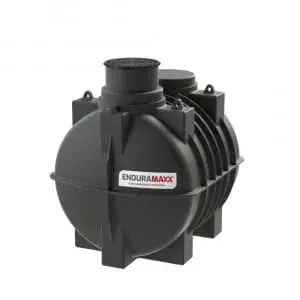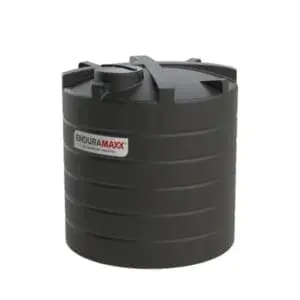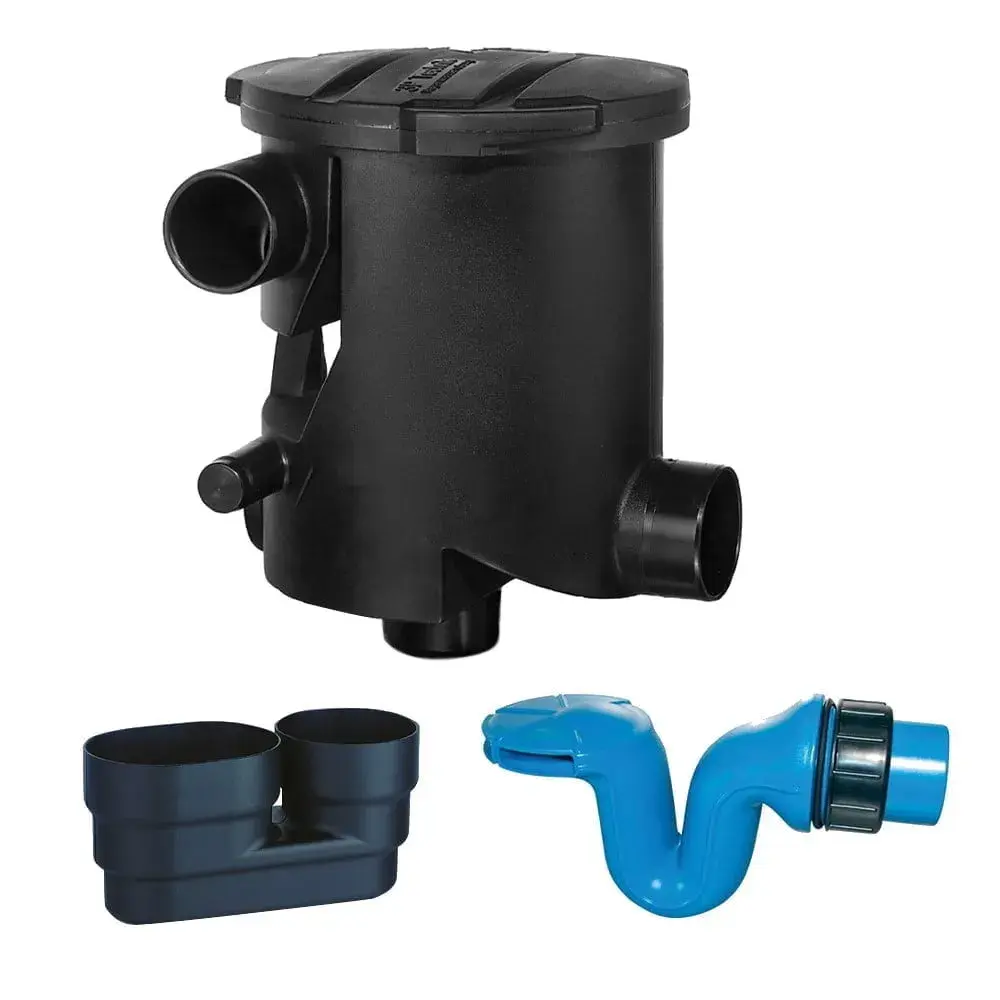How to clean a rainwater tank – a lot of people think that rainwater tank water is clean, after all, what could be cleaner than rainwater? While rainwater is free of chemicals and other drinking water supply additives, rainwater tanks do require regular cleaning to avoid a build-up of sediment.
Rainwater tank gathers impurities as it falls and can encounter bacteria, leaves and other debris as it falls on the roof, through the filter and into the tank. Taking time to clean your rainwater tanks each year can help maintain water clean throughout the year.
1: Wait until autumn as the water will be the lowest
If you wait till autumn, the water level will be at its lowest. Make sure to disconnect any pumps or filters from any mains water or mains electrical supply.
2: Drain your tank
After disconnecting the pump or associated filters or fittings now drain your tank. If you open valves or drain points to empty the tank. This may take some time if there is a small outlet as the water is under less pressure as the water level drops.
3: Remove any sediment in the tank
There could be a build-up of sediment on the tank depending on the tanks locations, the condition of the roof and the style of rainwater filter. If you do not have a suitable leaf filter it could contain sludge/rotting leaves/twigs etc. Now is a good time to consider if the rainwater filter or needs upgrading or maybe a good time to invest in a filter to prevent the build-up for next time you have to clean out the tank.
4: Fill the tank again
Now the tank is clean, you can reconnect pumps, filters, pipework. It is often a good idea to check the roof and gutters for debris. The cleaner the roof the less sediment and particles will get picked up by the water and require filtering.
Rainwater Filters
We advise to check the rainwater filter 2-3 times a year, to check the condition of the filter screen and the check nothing which is too big to flow through has happened to get into the pipe. Big storms during autumn and winter can bring down a lot of leaves and twigs which may damage the filter.
Are You Considering Using Rainwater Filters
If you are not using a rainwater filter currently, you may want to consider installing one as it can improve the water quality as it flows from the collection roof before it enters the tank. Rainwater filters 2 inlets for incoming water which are 4? on the 450m2 roof area filter and 4” and 6? on the larger 800m2 roof area filter. Both filters have an overflow taking the leaves and moss away to a drain.
Check rainfall statistics for your location on the Met Office website.
Enduramaxx manufacturing rotational moulded rainwater tanks for domestic, agricultural and commercial applications. For above-ground installations, these are available as singles moulded tanks up to 40,000 litres and connecting kits to enable up to 120,000 litres
To discuss on How to clean a rainwater tank please get in touch today.
Posts By Topics
- Blog (303)
- Chemical Storage Tanks (118)
- Chemical Dosing Tanks (114)
- Chemical Tanks (114)
- Water Tanks (58)
- Rainwater Harvesting Tanks (43)
- Vertical Rainwater Tanks (31)
- Vertical Storage Tanks (31)
- Cone Bottom Tanks (19)
- Conical Cone Tanks (18)
- Rainwater Harvesting (17)
- Water Bowsers (15)
- Horizontal Tanks (14)
- Potable Water Tanks (13)
- Farming (9)
- Case Studies (8)
- Industrial Storage Tanks (7)
- Liquid Fertilser Storage Tanks (6)
- WRAS Approved Potable Tanks (6)
- Wine and Beer Production (6)
- Horizontal Transport Tanks (5)
- Microbrewery (5)
- Rainwater (5)
- Category 5 Break Tanks (4)
- Cider Production (4)
- Mixer Tanks (4)
- Molasses Tanks (4)
- Polyethylene tanks (4)
- Rainwater Filter Kits (4)
- SPECIALIST & BESPOKE TANKS (4)
- Bunded Tanks (3)
- Slimline Tanks (3)
- WRAS Approved (3)
- Clarification Tanks (2)
- Crosslinked Polymer Tanks (XLPE) (2)
- Fertiliser Tanks (2)
- Sump Tanks (2)
- Tank Installation (2)
- Water Butt (2)
- underground water tanks (2)
- ACCESSORIES & FITTINGS (1)
- ATV & UTV SPRAYING UNITS (1)
- Above Ground Effluent Tanks (1)
- Bespoke Tank Frames (1)
- Category 5 Turret (1)
- Caustic Soda Tanks (1)
- Closed Top Bunded Tanks (1)
- Craft beer (1)
- Effluent Tanks (1)
- Enduramaxx (1)
- Ferric Chloride Tanks (1)
- Fire Safety Regulations (1)
- Fire Sprinkler Water Storage Tanks (1)
- Industrial Water Tank (1)
- Open Top Bunded Tanks (1)
- Open Top Cone Tanks (1)
- Open Top Vertical Tanks (1)
- Polyethylene Potable Water Tanks (1)
- Polyvinylidene Fluoride (PVDF) Tanks (1)
- Polyvinylidene Fluoride Tanks (PVDF) (1)
- Pressure Washers (1)
- Pro Series Spot Sprayers (1)
- RWH (1)
- Sodium Hydroxide Storage Tanks (1)
- Sprayer Fill-up Tanks (1)
- Uncategorised (1)
- liquid fertiliser tank (1)
Sign up to the newsletter
enduramaxx.marketing
Related Posts
5 Reasons For Domestic Rainwater Harvesting | Enduramaxx
5 Reasons For Domestic Rainwater Harvesting – at some times of the year there’s uncertainty around...
Why Filter Rainwater from Roofs? | Enduramaxx
Filtering rainwater from roofs are required for rainwater tanks for homes, agriculture, office and...
Save Water With The Best Quality Rainwater Tanks Above & Below Tanks
Save Water with the Best Quality Rainwater Tanks, for those living on rural properties and running...
Related Products
From £1,080.00 inc. VAT
£900.00 exc. VAT
From £1,344.00 inc. VAT
£1,120.00 exc. VAT
From £768.00 inc. VAT
£640.00 exc. VAT
£480.00 inc. VAT
£400.00 exc. VAT






